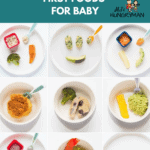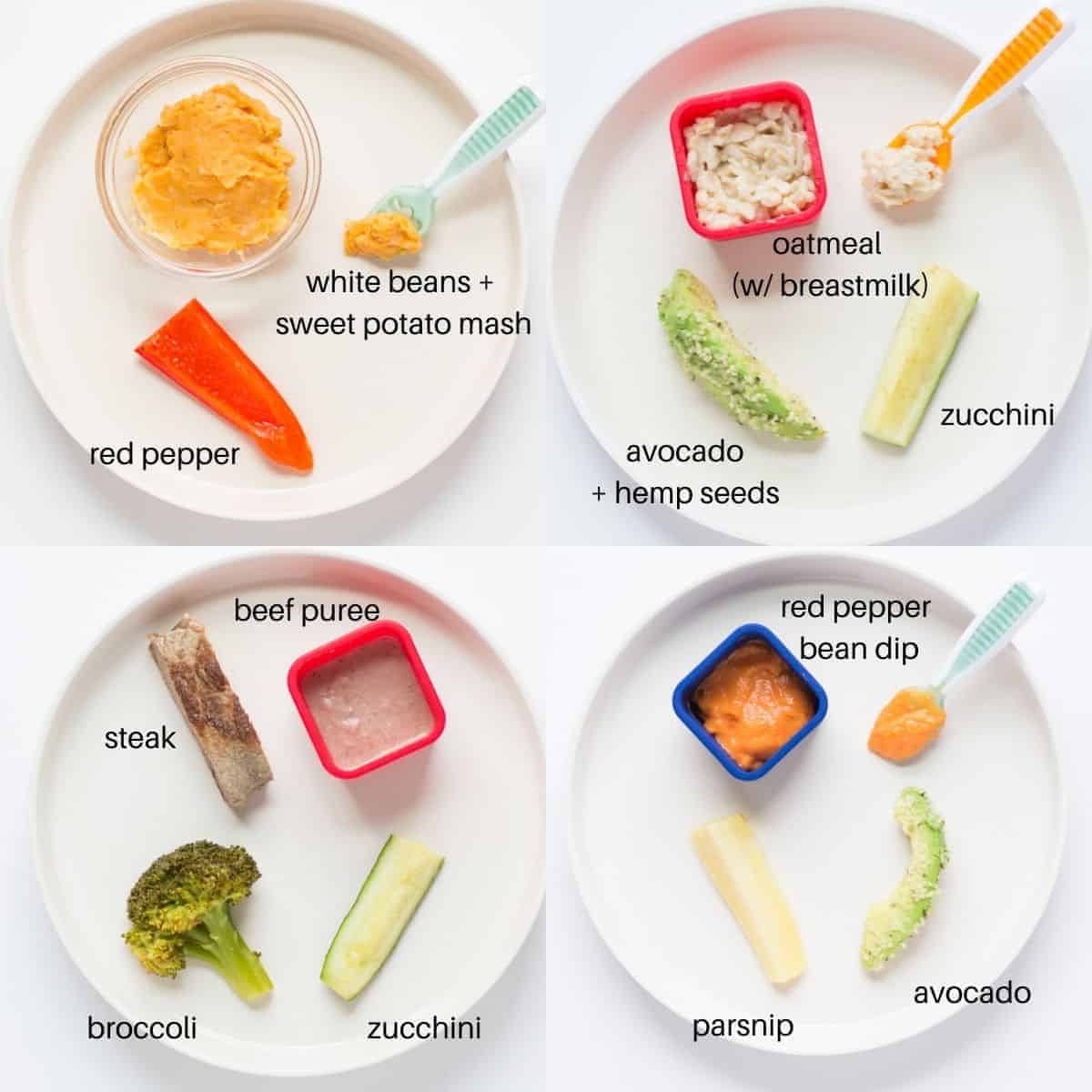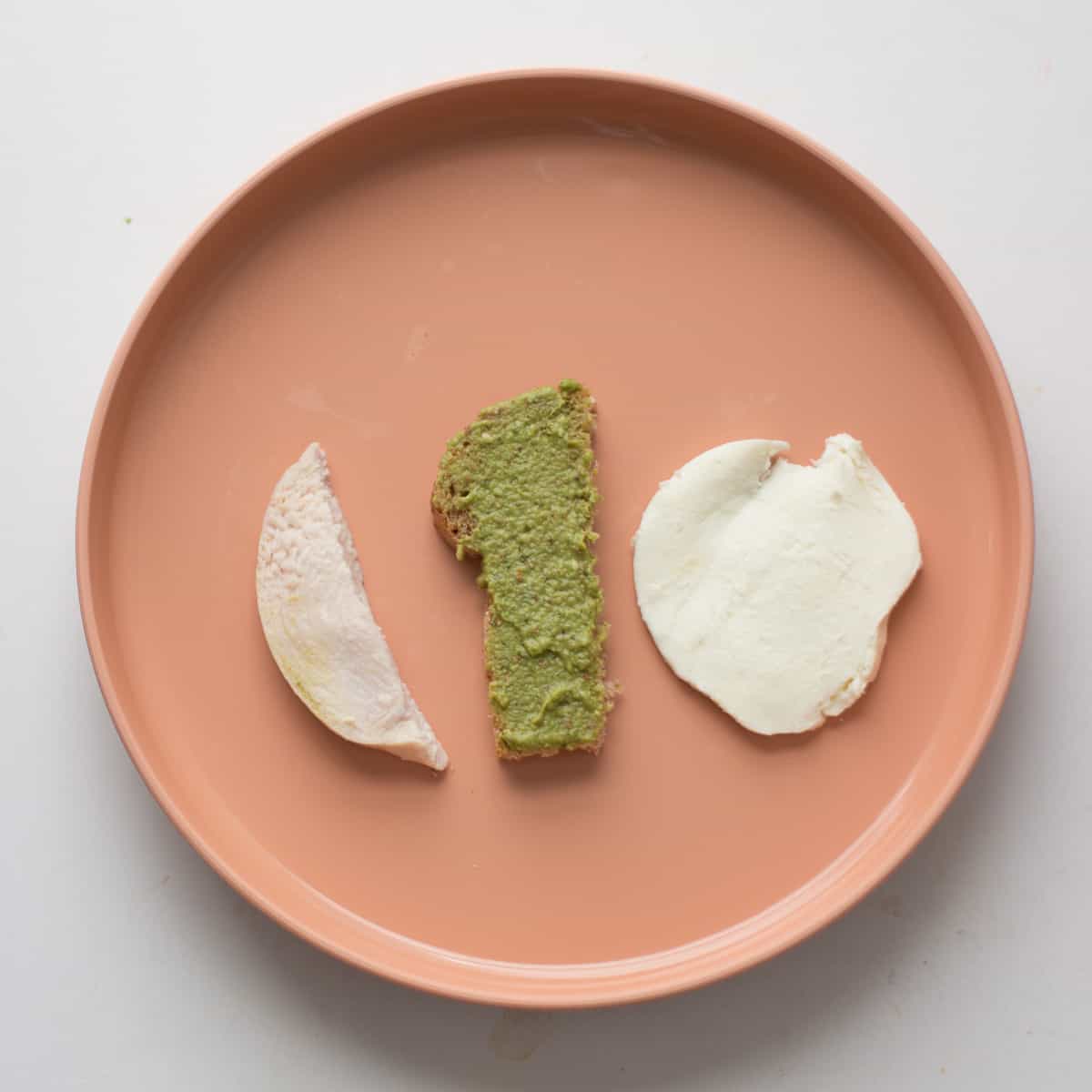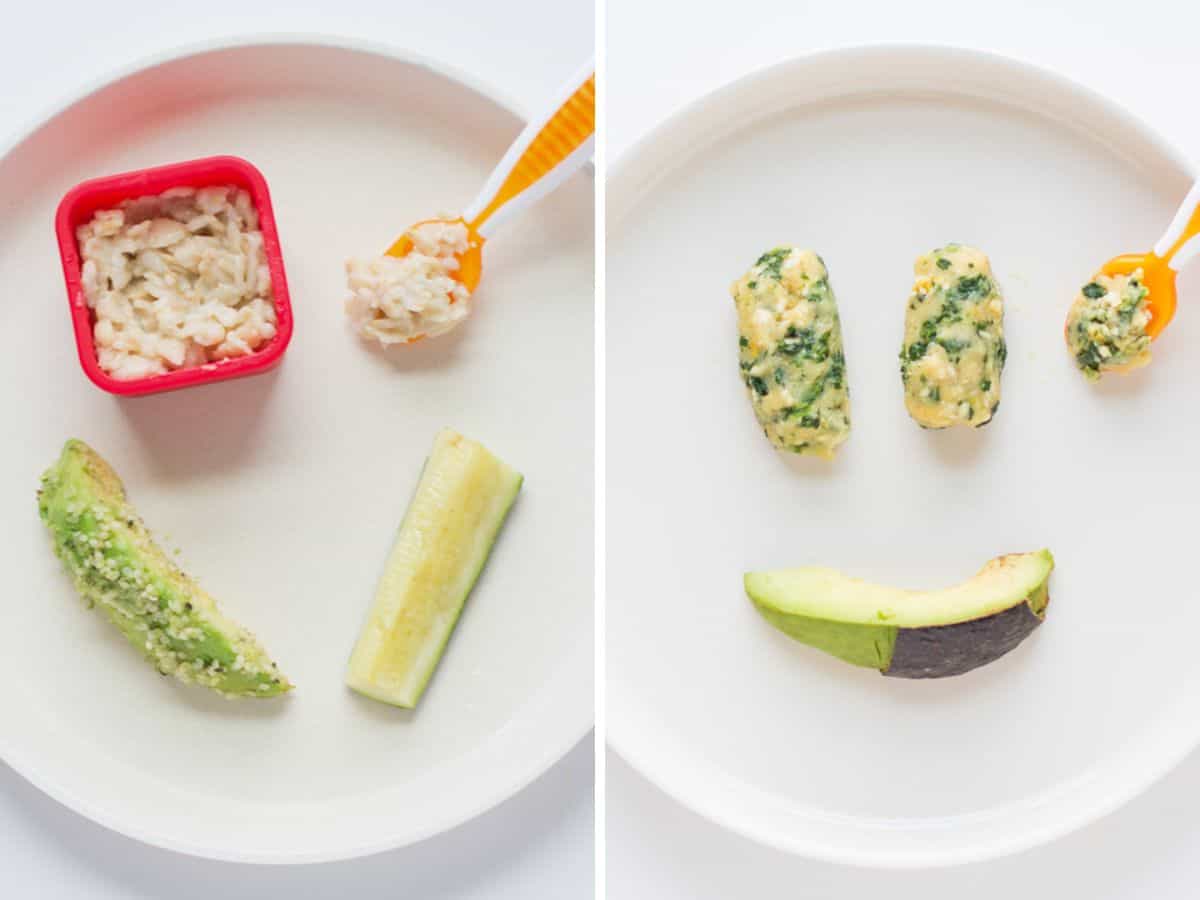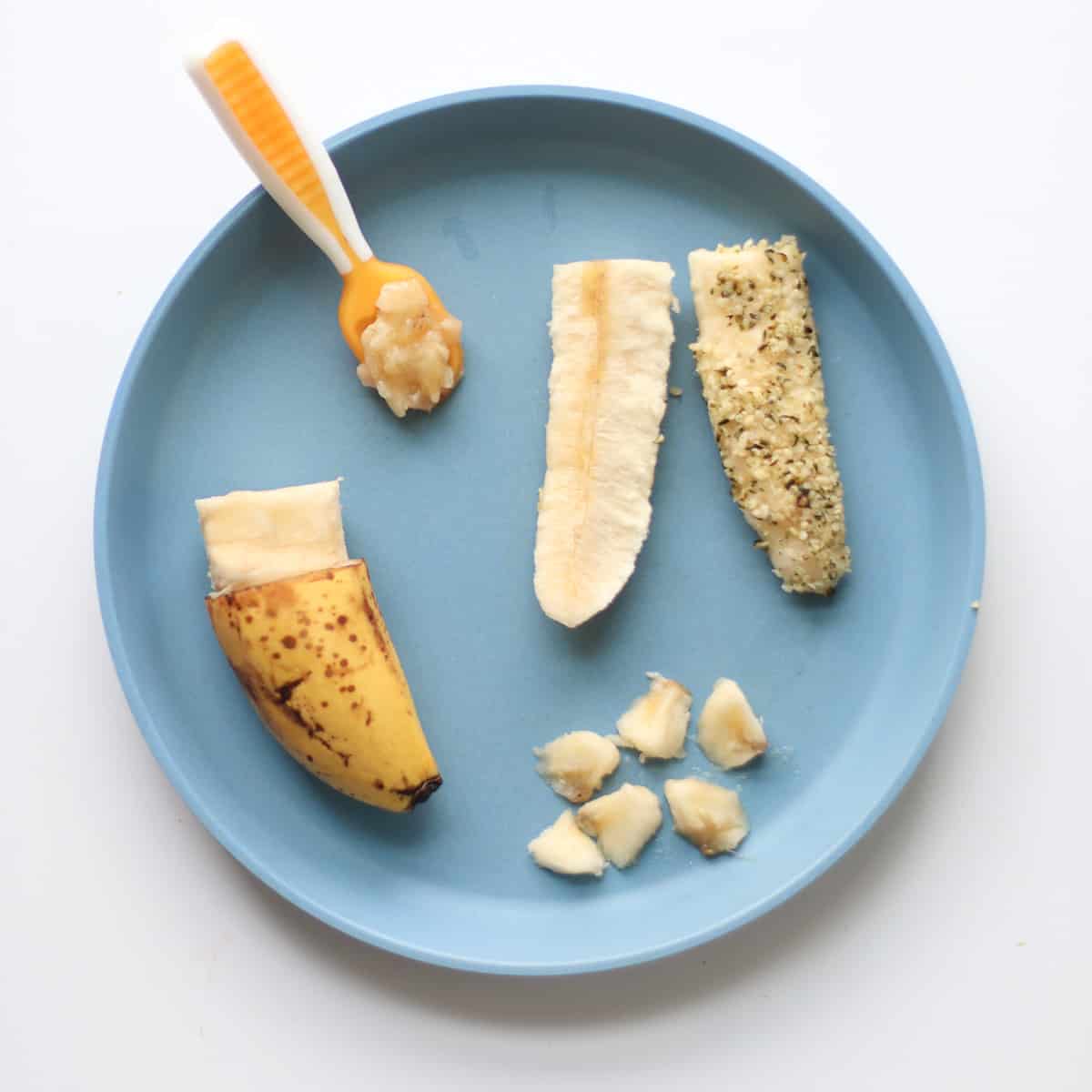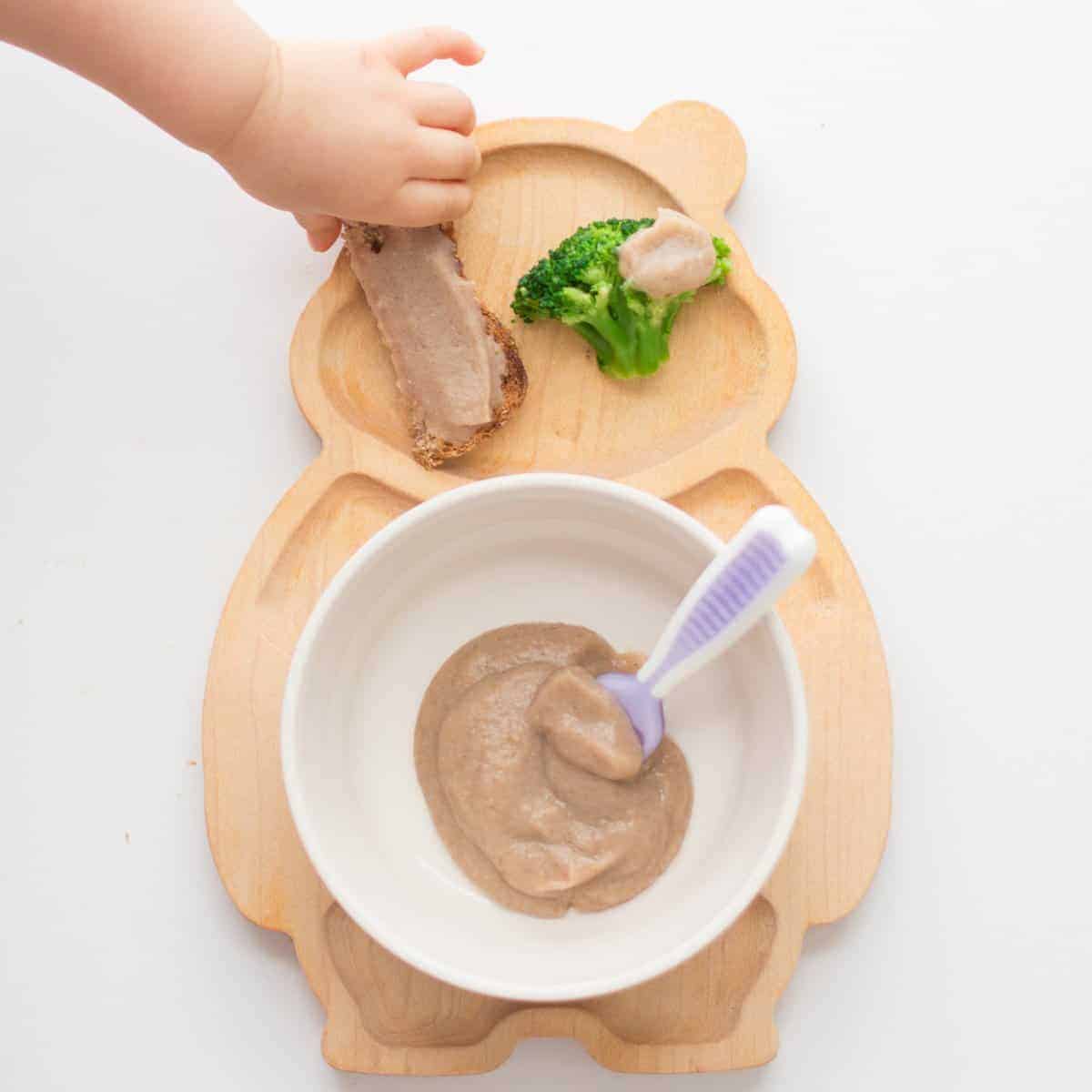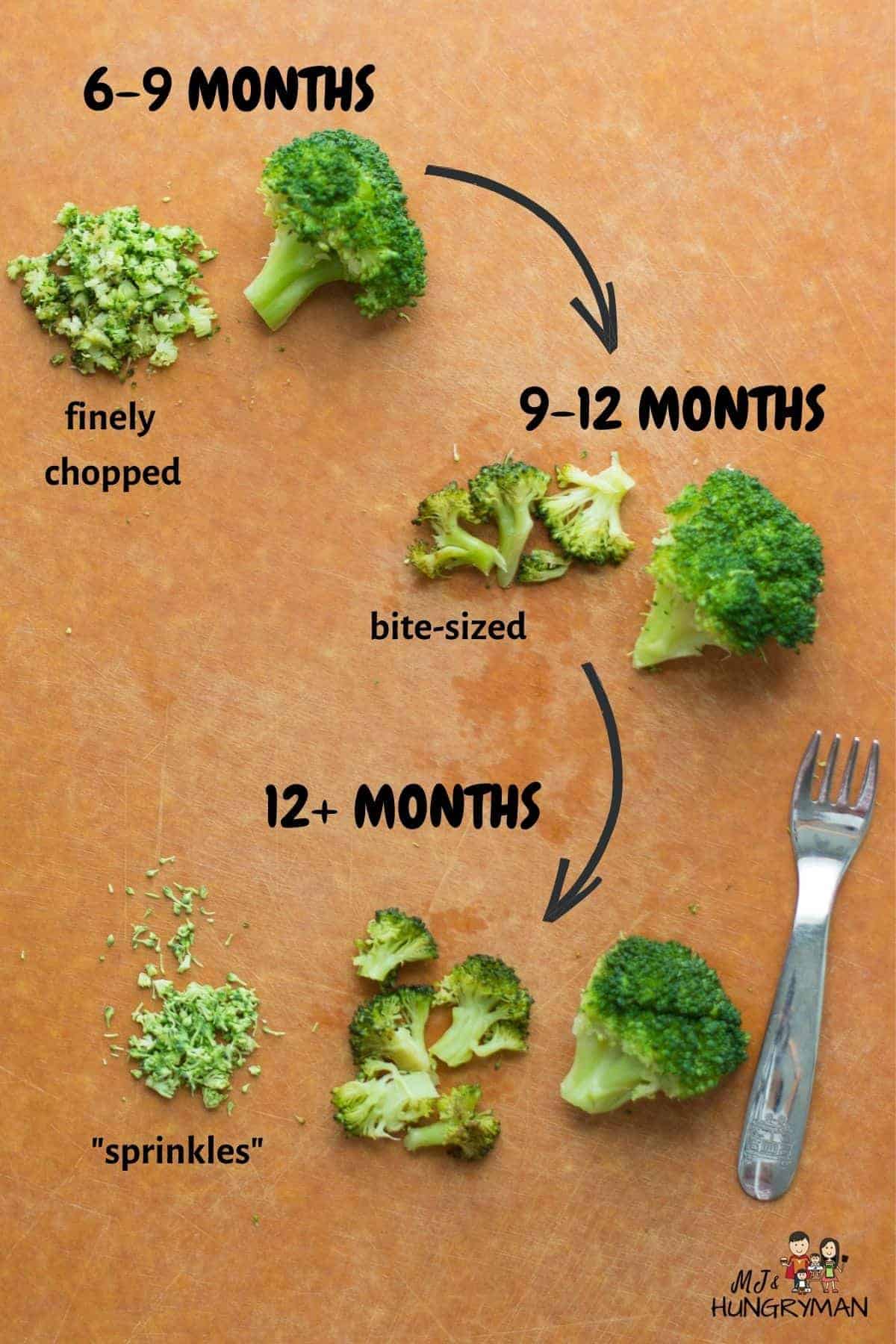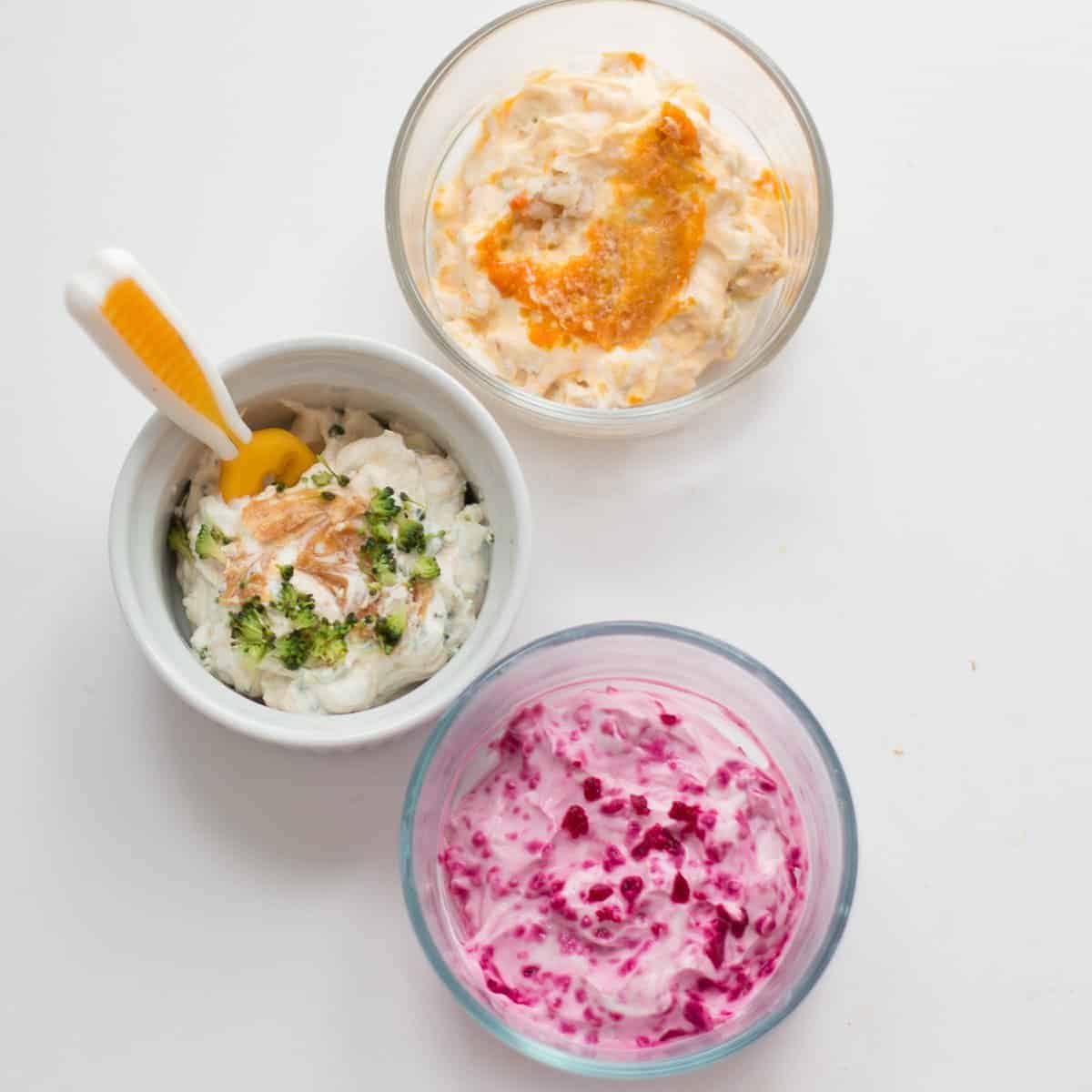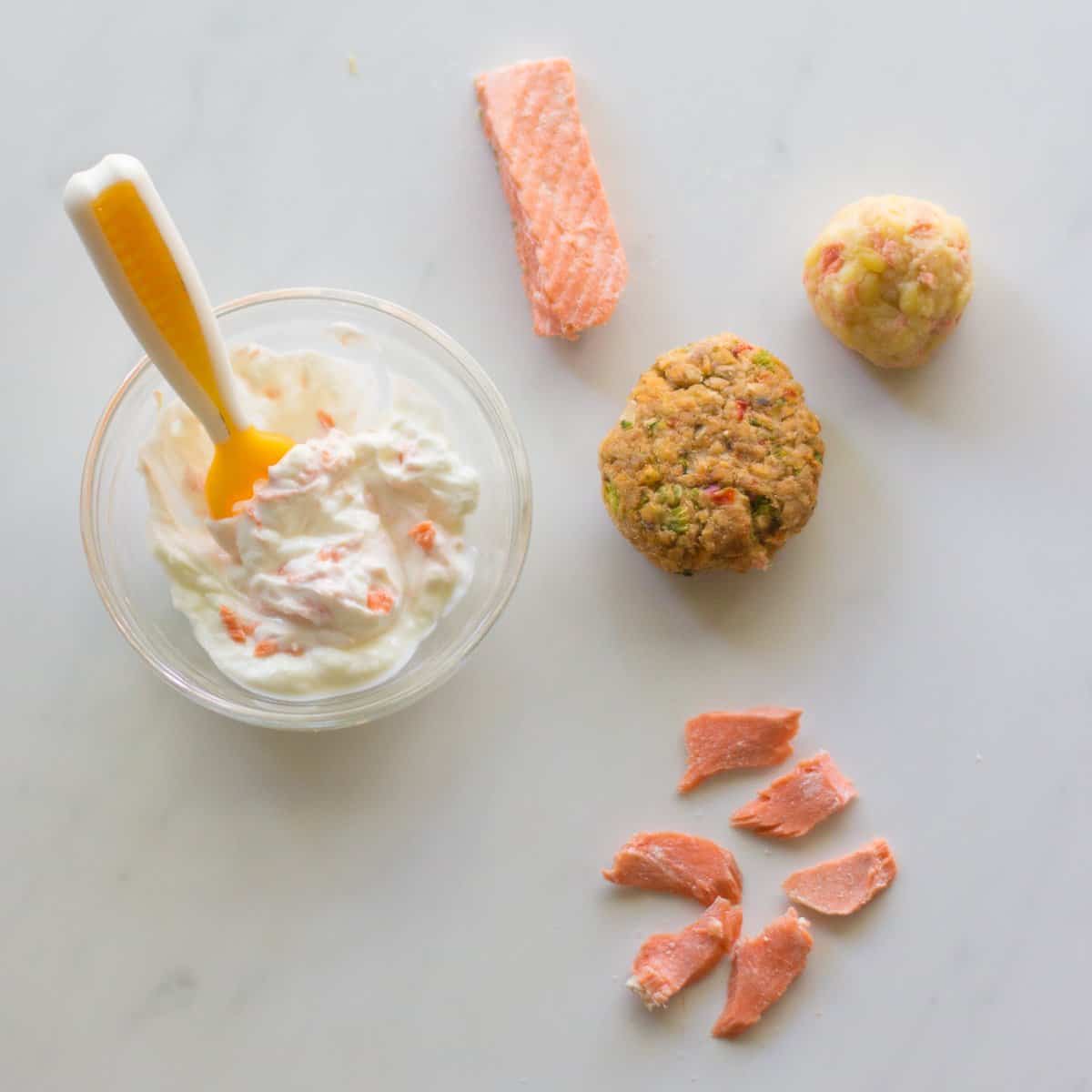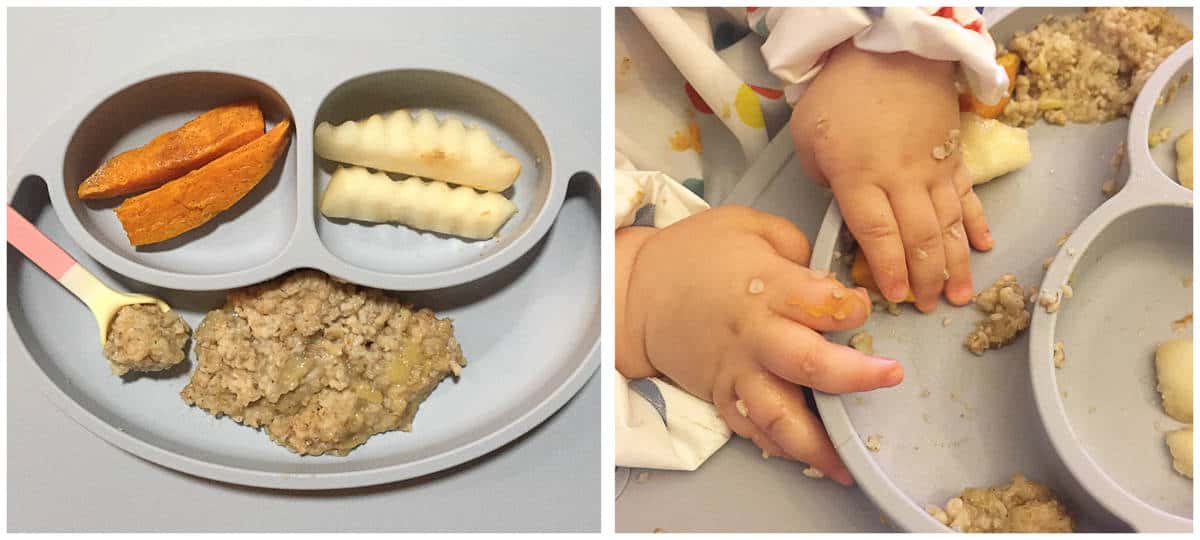When to start Solids
While it was once recommended to start solids as early as 4 months, the major health organizations, including World Health Organization and The American Academy of Pediatrics, recommend starting at around 6 months of age.However, age is just ONE of the factors. What’s most important is that your baby meets ALL the developmental signs of readiness. Unsure what those are? Click on the link below to grab my FREE handout that will help ensure you start at the safest, most optimal time.
How to get started with weaning
There are two general approaches – spoon-feeding and baby led weaning. I go into great detail discussing the pros and cons of each and much more to empower you to make the best decision for you and your family!I also share a third approach you may not know about, so be sure to give the linked post a read! I’ll be here waiting ;).
What is Baby Led Weaning?
Baby led weaning, BLW, or sometimes referred to as baby-led feeding is a feeding method popularized in the United Kingdom by Gill Rapley that encourages babies to feed themselves, explore, set the pace and to be in full control of what and how much to eat. For a deep dive, check out this ultimate guide to Baby Led Weaning that covers everything you need to get through mealtimes with confidence and ease.
Best First Foods for BLW
As a registered dietitian, here are my top recommendations. They all meet the criteria of being nutrient-dense to make every bite count. They are also great for flavor and texture exposure and can easily be incorporated into your baby’s diet.
BLW Chicken
Chicken is an excellent source of iron, arguably THE most important nutrient for babies. It also contains zinc (necessary for making protein and DNA, aids in immune function and cognition), choline, vitamins B6 and B12 (important for optimal brain development, metabolism and maintaining a healthy nervous system). Serve: Here are 4 ways to cook chicken for babies. You can offer big strips, (1-2 inch wide), drumstick, or a whole meatball. Or finely shred and add to oatmeal, pasta, mashed avocado, etc.
Avocado for Babies
You may already know that avocado is a fruit, not a vegetable. But did you know that it is actually a berry? Avocado is one of the best first foods for babies. It’s an excellent source of fiber, which aids in digestion, and healthy fat, which is essential for supporting their rapidly growing brains! Serving avocado alongside foods that are rich in fat-soluble vitamins (vitamins A, D, E, K), like carrots and sweet potatoes, can really increase the absorption of these nutrients. Serve: Cut avocado into thick spears. To make it easier to grip, you can leave some of the peel on or roll them in hemp seeds, finely ground nuts, shredded coconut, or fortified infant cereal.
BLW First Food – Eggs
Eggs contain all 9 essential amino acids and provide several key vitamins and minerals recommended by the American Academy of Pediatrics for little ones’ growing brains and bodies, including iron, choline, vitamin B12, and iodine. Serve: scrambled, hard-boiled and cut into quarters, or add to baked goods, like pancakes and muffins. Here are more Egg Recipes for Babies
Baby Led Weaning Banana
Bananas are a good source of so many important nutrients, including potassium, vitamin B6, vitamin C, and magnesium. All of these nutrients work together to strengthen the immune system, aid in muscle and bone development, and facilitate iron absorption. Serve: slice the banana in half and insert your finger into the center of the fruit. You will end up with 3 spear-shaped pieces of banana. Serve as is or roll in hemp seeds, ground flax seeds, ground nuts, infant cereal, coconut, etc. to make it less slippery and easier to grab. More Ways to serve Banana to Babies
Beans for Babies
Beans are classified as a legume (also called pulses), along with peanuts, peas, and lentils. This is a family that packs a powerful punch when it comes to nutrition. Be sure to pair them with vitamin C rich foods to greatly enhance the absorption of iron! Serve: Puree/blend or mash. The consistency is pretty thick and dry so add some breastmilk/formula to thin it out. Here’s how to prep and serve beans to your baby.
BLW Broccoli
Broccoli is a good source of many vitamins and minerals, including vitamin C, K, A, as well as folate and potassium. It’s also rich in fiber and various antioxidants. I highly encourage you to introduce broccoli and other bitter flavored foods, early and often, as research suggests that doing so can greatly increase a baby’s willingness to try and accept these foods later in life. Serve: Bigger is better and safer at this age so they can easily grab the food with their palm and bring to mouth. So welcome those giant florets ;). Try to leave as much of the floret stem as possible to make it easier for your baby. Here’s the ultimate guide to serving broccoli to babies
Baby Yogurt
Yogurt is a great source of protein, calcium, and healthy fat, which is so essential during this stage of rapid brain development. Yogurt is also an easy way to incorporate probiotics into your baby’s diet which is important for digestive health and strengthening the immune system. Serve: Serve as is or combine with finely ground nuts, seeds, baby cereal, fruit puree, etc. Preload onto a spoon (this is the BEST baby spoon). Here are the best baby yogurts.
Salmon for Babies
Salmon is particularly an excellent source of B12 , which is necessary for producing red blood cells, and omega-3 fatty acids, an essential nutrient for proper brain development. Canned salmon is also a great source of calcium due to the edible bones. Salmon also contains lower amounts of sodium and mercury compared to other fish. Serve: Offer finger-shaped, 1-2 adult finger-width pieces. Or flake into tiny pieces and add to other foods, such as lentils, vegetable French toast, and Salmon quiche. Here’s how to cook and serve salmon to babies.
Baby Oatmeal
Variety is the name of the game when it comes to increasing food acceptance and minimizing picky eating down the road. And oatmeal is SO versatile! You can mix in eggs, fruits, vegetables, nuts, seeds, yogurt, cheese…the world is your oyster! Serve: preload onto a spoon although your baby will most likely just dive in with their hands. And that’s ok! Messy eating is an important part of learning to self-feed. You can also shape into balls or fingers to make the oatmeal easier to eat. Learn how to cook the most perfect oatmeal for babies
Sweet Potato for Baby
Sweet potatoes are ideal for baby-led weaning due to their nutrient-rich content, easy-to-grasp texture, and natural sweetness. Serve: Offer finger-shaped, 1-2 adult finger-width pieces. You can also mash or add to various recipes like sweet potato cookies and teething biscuits. Here are the top cooking methods and plenty of sweet potato recipes for baby.
More BLW First Foods
I highly encourage you to click on these links for a super in-depth dive into all of these foods.
Beef Lentils Sardines Quinoa Tofu Carrots Spinach Zucchini Apples Tomatoes Mango Peanuts and tree nuts – here’s the ultimate guide to peanut butter for baby Seeds (particularly pumpkin, chia, flax, hemp)
It’s extremely important that the finger foods are prepared in an age-appropriate way. Here’s an ultimate guide to the best finger foods for babies and how to serve them.
Best time to introduce the allergens
Short answer:As soon as your baby is ready to start solids, usually around 6 months.Long answer:For years, it was recommended to delay introducing highly allergenic foods until around 2-3 years of age as protection against food allergies. This is outdated advice. In fact, research shows that delaying these foods could actually promote the development of food allergies.I go into greater detail in this egg post, another top allergen, but to summarize, the current recommendation is to introduce highly allergenic foods EARLY and OFTEN. By doing so, you can dramatically reduce the risk or actually help prevent the development of food allergies.Some babies are considered high risk if at least one parent or sibling has an atopic condition (such as eczema, food allergies, allergic rhinitis, or asthma) or if baby has any of these conditions themselves.If this is the case for you, I highly advise you to work with a pediatric allergist early on to develop a course of action, as research suggests that introducing the allergens as early as 4 months may be beneficial for high risk babies.
How to introduce the top allergens (what order?)
The top allergens in the United States are:
Peanut Egg – both the white and yolk Cow’s milk Tree nuts Soy Wheat Fish Shellfish Sesame
When it comes to introducing these foods, you do not have to follow a particular order. But because most of the evidence for early introduction comes from research around peanut butter and egg, I personally like to recommend introducing these first. You do not need to introduce one food at a time. This is again, outdated advice. But do introduce one allergen at a time so if your baby does have a reaction, you’ll know which food is responsible.
How much Should a Baby Eat?
However much your baby wants to eat! Every baby is different and the beauty of practicing responsive feeding is that you FULLY allow your baby to take the lead. I know as a type A personality mama this is super hard to do at first. I remember so wanting to take charge and make sure baby eats xyz amount. But that will only lead to miserable mealtimes and a baby who loses their innate ability to self-regulate. And if you have an older child, you may have come to realize that pressuring doesn’t work. The eating habits established early on can last a lifetime, so it’s really important that we focus on setting a strong foundation from the start.So I highly encourage you to consider this time a learning experience, to recognize your baby’s hunger and fullness cues and to respond appropriately rather than coming to the table with the agenda of “I need my baby to eat everything on this plate.”Most likely your baby will not eat much, if anything at all, at first, especially when taking the baby led weaning approach. But before you throw in the towel and think, “what am I doing wrong?!”, I always encourage parents/caregivers to keep their expectations in check. These first days, weeks are all about building the skills and confidence necessary to self-feed and less about consumption. That WILL come if you persist and continue to offer solid food AND provide a safe, positive environment for your baby to EXPLORE. That means no matter how frustrated and anxious you may be, try to smile and feign indifference. Babies are so keen to a parent’s energy. Encouragement and support from their most trusted person is what they most need! Continue to offer around the same volume of breastmilk and/or formula. As your baby starts to eat more, their milk intake will naturally decrease gradually.
Foods to Avoid with Baby Led Weaning
Hard or crunchy texture – raw fruits and vegetables, whole nuts, crackers, popcorn, etc. Sticky texture – a glob of peanut or nut butter Cow’s milk – it’s fine to add to recipes but shouldn’t be offered as a drink Added salt Added sugar Honey – can lead to botulism
Baby-Led Weaning Meal Plan
As much as we want to delight our babies with all kinds of foods, seeing too much food can be overwhelming for them. So keep it simple and always be sure to include an iron-rich food. Have fun exploring this new world of food through the lens of your baby! I want to mention this again because it’s that important! Come to the table with No expectations. No agenda. Lots of smiles, encouragement, and curiosity. Finally, rather than watching your baby, make yourself a plate, preferably the same foods as your baby, and enjoy your meal alongside your baby. Teach your baby how to feed themselves by SHOWING them. Here are the exact meals I served to my baby during her first month of starting solids. Hope this provides you with some ideas! Simple. Well-balanced. Delicious! I actually filmed EVERYTHING I made for her as well as my toddler, husband, and me from Day 1 to Day 84 (so 3 months) in real time and turned them into an easy to access and follow program! You are here because you’re spending time researching everything you need to know to give your baby the best. I have a feeling you’re spending a lot of hours googling, going to all the different sites seeking answers to your burning questions, gathering recipes, etc. What if I handed you a complete roadmap that would show you through daily videos and photos of what foods and how to serve them to your baby AND the rest of the family at the same time? Everything you need to know all in one place. Here’s Baby Led Feeding Journey Program if you’re looking for such resource ;).
